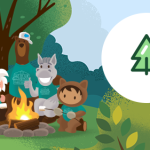In the 1990s, two kindred spirits launched the Balwadi programme to teach young children in the slums of Mumbai. And that is how Madhav Chavan and Farida Lambay founded Pratham in 1994, with an aim to ensure education for all.
Today, this nonprofit is bridging gaps in education across India and even creating an impact abroad. Pratham reaches around 4.5 million children annually through its education programmes.
Empowering youth with education and skill development
Pratham strives to make education equitable, with the goal of “every child in school and learning well.” Pratham equips underserved children with basic cognitive, language, and arithmetic skills that build a strong base for further learning through their varied school-level programmes. Beyond schools, it also offers vocational skills training for youth, especially women, to help them access employment or entrepreneurial opportunities. So far, Pratham has impacted 150,000 youth through its vocational skilling arm. Through its digital initiatives, Pratham is now creating an open, self-learning environment powered by ed-tech and the support of coaches and volunteers in its communities.

Using technology to create scalable and measurable impact
Pratham partners with state governments and local bodies to run its various programmes.
With a growing network of stakeholders and programme beneficiaries came the need for simple, easy-to-use technologies to streamline communication and measure impact. Pratham uses technology to achieve 3Es – efficacy, efficiency, and engagement. Here’s how:
-
Delivery of digital content: To improve literacy and spread awareness about current issues such as COVID-19, Pratham collaborates with industry experts to create digital content. The content is also made available offline in low-tech environments as downloaded content available on tablets. Besides enabling basic literacy and numeracy, Pratham has also created digital programmes that focus on teaching life skills, like financial and digital literacy.
-
Tracking the progress of vocational training programmes: To optimise its vocational training programme, Pratham relies on Salesforce Tableau. The nonprofit creates customised dashboards to help team members at all levels monitor the programme, using metrics such as registration of trainees or post-placement developments collected from 100+ centres. Comprehensive reports help central teams, donors, and recruiters glean insights and evidence about the programme’s effectiveness.
-
Keeping a check on the education system’s health: Pratham also creates custom dashboards for its stakeholder ecosystem – governments, teachers, and volunteers – that provide a holistic view of the education system, including enrolment rates and programme penetration. In Karnataka, for instance, such dashboards have helped supervisors and support teams to schedule school visits and aid local schools.
-
Improving collaboration: With multiple projects running simultaneously, there needs to be seamless coordination between different teams. Pratham uses Slack to stay in sync with team members spread across the country and collaborate on content creation and product management tasks.
-
Measuring impact: Pratham’s ASER is a massive exercise that involves collecting and processing year-on-year data about its programmes from all over the country. Pratham uses technologies like AI and ML to measure the impact of these programmes and deliver educational aid with an evidence-based approach.
-
Assessment accuracy: Most government school students are at a disadvantage when appearing for online examinations other than those of multiple-choice questions (MCQs) formats, as they lack typing skills. To give such students a level playing field, Pratham introduced image and voice recognition-based answer formats that enable a more accurate assessment of their learning.
Increasing technology focus to amplify the impact

When the pandemic hit, Pratham was already prepared, as essential functions such as administration and data collection were already digitised. A substantial repository of digital content was already available for ramped-up distribution. The team created short lessons that could be distributed through SMS and WhatsApp and formed smaller student groups that could share books and devices. To ensure that staff members and volunteers could make the most of these digital tools and technologies, Pratham also conducted training sessions during the pandemic.
The pandemic-triggered push to accelerate digital adoption will continue enabling the teams within Pratham to focus on what matters: education for all.
Technology can be an excellent enabler for nonprofit organisations. Be it to enable networking, fundraising, customised communications, or streamlining operations, Salesforce Nonprofit Cloud can manage it all. And through the ‘Power of Us’ programme, Salesforce.org offers deep discounts to nonprofits on all Salesforce products.

























